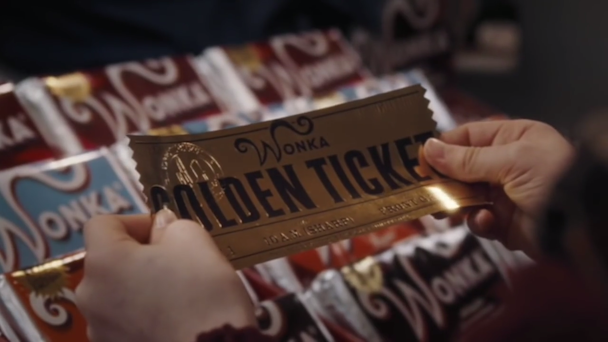What today’s media pros could teach Willy Wonka: A media analysis of Charlie and the Chocolate Factory
You've probably read "Charlie and the Chocolate Factory," but you may have not read it from an advertising or media perspective. I have, and as a media professional, I have some unfortunate news to report: Willy Wonka made some huge mistakes.

Willy Wonka could have benefited from data in his Golden Ticket Campaign
Too often, advertisers misinterpret the data at hand, either targeting the wrong consumers, or conversely, targeting the right consumers in the wrong way. Willy Wonka’s Golden Ticket Campaign (or GTC) is, unfortunately, no exception. In this campaign, five golden tickets are randomly planted underneath the wrapping of otherwise ordinary Wonka bars, and each of the five winners receives a personally led tour of Wonka headquarters and "enough chocolates and sweets to last them for the rest of their lives." In addition, one lucky winner will (spoiler alert) succeed Willy Wonka as CEO.
The media brief may have looked something like this:
Objective: Raise awareness of GTC; Prompt interest amongst qualified audience to increase Wonka bar sales and identify future leadership of Wonka Chocolate
Target Audience: Children on "any street in any town in any country in the world”
So, what is Wonka's approach? In the text, Wonka launches GTC simply by releasing a statement to “an evening newspaper,” which Mr. Bucket stumbles upon. This announcement creates an instant frenzy, generating an enormous amount of earned media and increasing momentum upon the discovery of each golden ticket.
At first glance, this seems highly efficient, eliminating the need for a paid media budget. Yet results of this approach were largely negative: 4 out of 5 "winners" were deeply unqualified to succeed Wonka, failing to deliver on secondary campaign objectives and suggesting his approach skewed towards the wrong type of user.
Here lies the problem: Wonka, like many advertisers, failed to fully understand his audiences by misinterpreting data, and operating under false assumptions. A more complete consumer profile would have helped Wonka immensely. Consider the candidates and their demonstrated behavior:
• Veruca Salt, for example, is a heavy user and likely purchased high volumes of Wonka bars to optimize her chances of winning. However, this is a function of her affluence and not a reflection of her affinity toward the brand or fitness to lead.
• Likewise, Augustus Gloop is also a heavy user and probably has the highest purchase frequency of all the winners. Yet, his high propensity for chocolate is also what disqualifies him. In both of these cases, looking at a single data point ignores the larger truth.
• Violet Beauregarde is a heavy user, but her chocolate usage is only moderate compared to her gum consumption. Likewise for Mike Teavee; chocolate is of interest, but secondary to television. Wonka's heir must have a priority interest in both the brand and the category.
• Charlie Bucket, in contrast, is a very light user. He buys a Wonka bar only once a year on his birthday, suggesting a much more emotional attachment to the brand despite lower usage. This is also supported by the rate and duration of his consumption — he nibbles only a tiny bit each day, extending the lifecycle of each bar and giving him the highest dwell time with the product. He also has no other demonstrated interests and his low income and crowded household suggest he would be fiscally conservative as CEO, exhibited by his prudent consumption of cabbage and cabbage soup.
Willy Wonka’s media investment should have focused on users with the same consumer profile as Charlie, via look-a-like modeling: lower income users with a light but ritualized behavior towards the product. Users within this segmentation are the least inclined to purchase outside their defined patterns, so they may require specifically tailored messaging to solicit trial and engagement, which they would have received from greater outreach by the GTC campaign. A data-driven approach would have produced a more qualified group of winners, making the overall selection process more competitive and increase the odds of an appropriate future leader.
Data, as it turns out, is the real golden ticket.
Patrick Link is an associate planning director at Maxus

